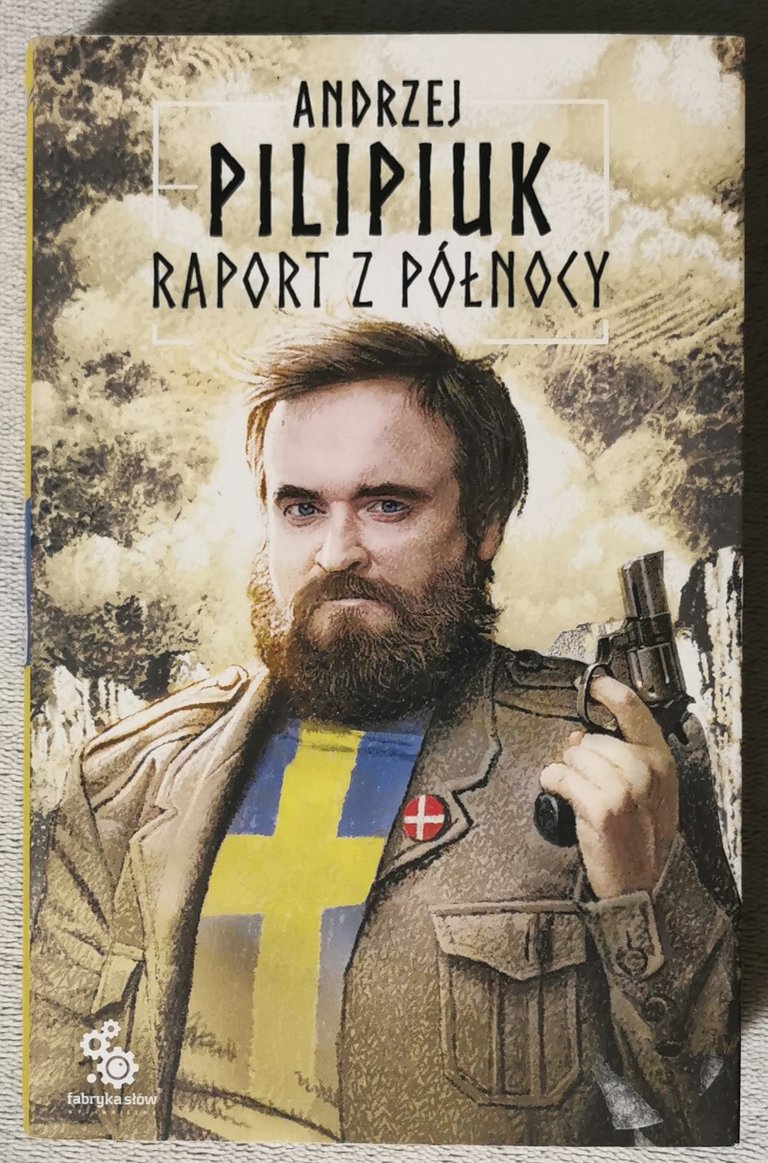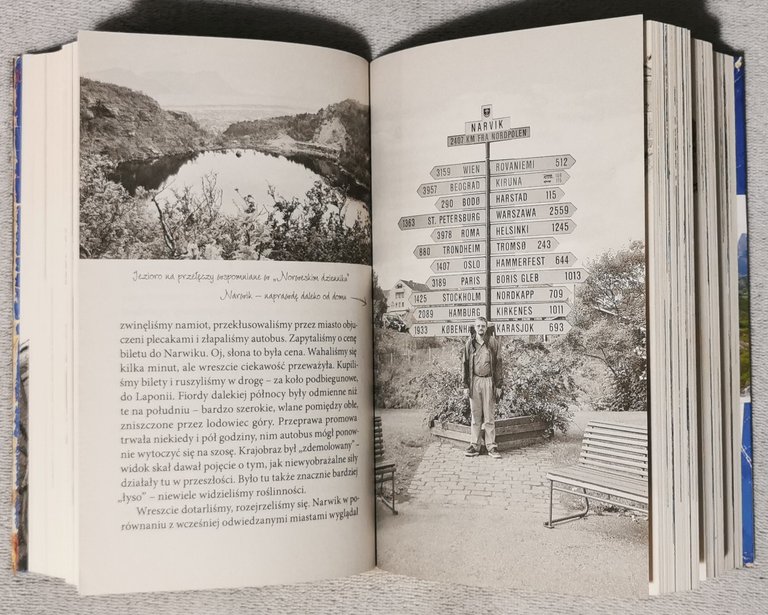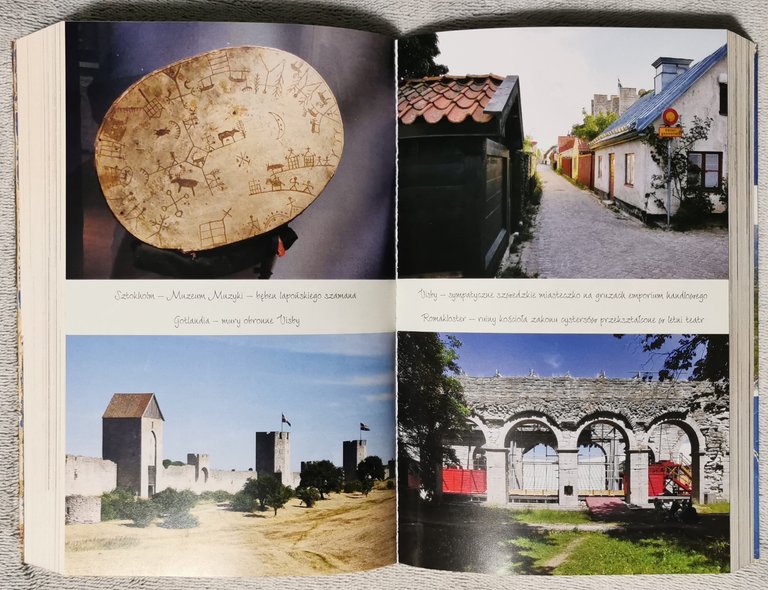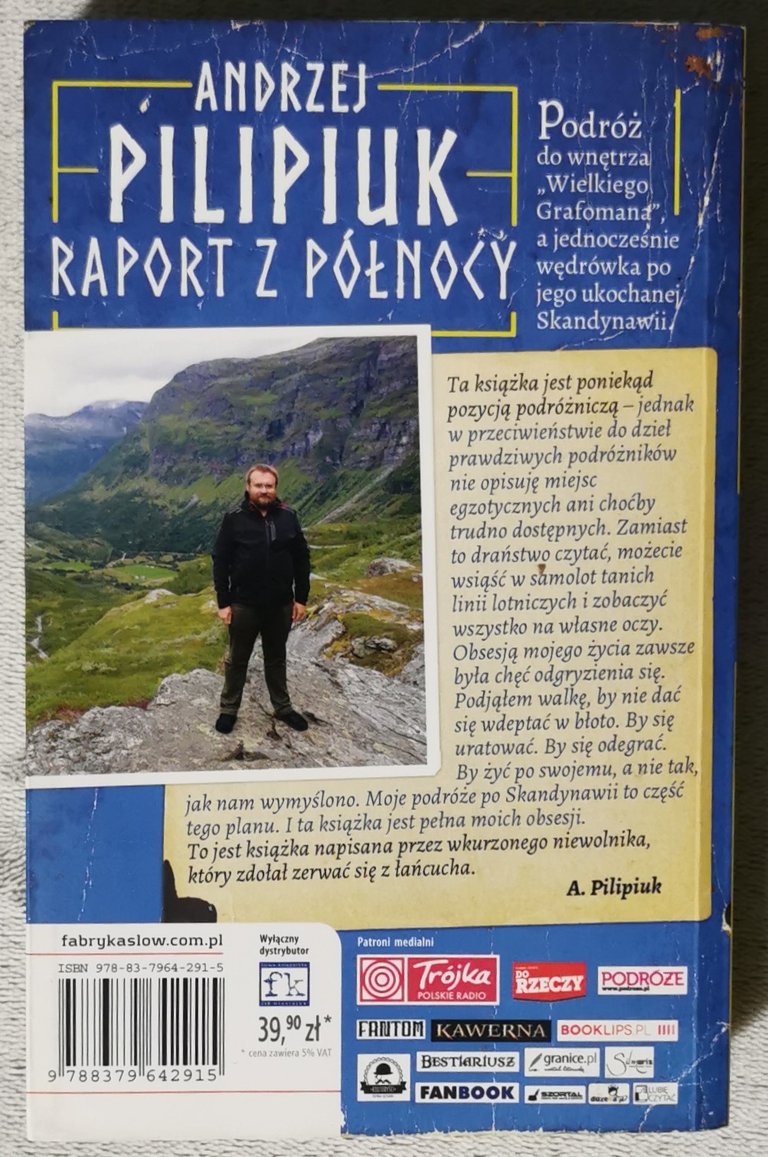| Jakiś czas temu przedstawiałem Wam nietypową książkę Andrzeja Pilipiuka – a właściwie o Pilipiuku – w której można się zapoznać z autorem jako osobą, z jego przeżyciami, doświadczeniami i poglądami przez nie ukształtowanymi. Gdyby ktoś się czuł tym niewystarczająco usatysfakcjonowany, powinien się zapoznać z inną, wcześniejszą książką, którą przedstawiam Wam dziś – „Raportem z Północy”. |
Some time ago I introduced you to an unusual book by Andrzej Pilipiuk - or rather about Pilipiuk - in which you can get to know the author as a person, his experiences and the views they have shaped. If that is not enough for you, you should take a look at another, earlier book that I am presenting to you today - 'Report from the North'. |
| W języku niemieckim istnieje słowo „Fernweh”, oznaczające specyficzny rodzaj tęsknoty, za dalekimi miejscami, w których się nawet nigdy nie było. Znam dobrze to uczucie, bardzo dobrze znane było również autorowi, dla którego obiektem tęsknoty była Skandynawia, przede wszystkim Szwecja. I o tym właśnie jest ta książka – o przyczynach tej tęsknoty i o tym, jak w końcu została ona zaspokojona. |
In German there is a word 'Fernweh', which means a certain kind of longing for distant places where one has never been. I know this feeling very well, and it was also very familiar to the author, for whom the object of longing was Scandinavia, especially Sweden. And that is what this book is about - the reasons for this longing and how it was finally satisfied. |
| Sam autor zdaje sobie sprawę z nietypowości swojego dzieła. We wstępie pisze, między innymi: „Docelowy czytelnik, któremu mogłaby się ta pozycja spodobać, prawdopodobnie nie istnieje.”, „O nudnym gościu, który nie miał przygód, napisałem książkę, która siłą rzeczy też jest długa i nudna”, a także „Lepiej nie czytajcie, bo albo się wynudzicie, albo – co gorsza – zarazicie tą goryczą. Tak czy inaczej, zostaliście ostrzeżeni”. Ja jednak przeczytałem. |
The author himself is aware of the unusual nature of his work. In the introduction he writes, among other things: "The target reader who might like this book probably doesn't exist", "I've written a book about a boring guy who hasn't had any adventures, and this book is inevitably long and boring", and "You'd better not read it, because you'll either be bored or, worse, infected by this bitterness. Anyway, you have been warned". But I read it. |
| Zaczyna się retrospekcją do lat czasów ustroju dawno (i słusznie) minionego. Andrzej Pilipiuk miał pecha urodzić się w 1974 roku, co sprawiło, że ominęły go najlepsze i najbardziej optymistyczne lata tegoż ustroju, zaś okres świadomego dzieciństwa i wczesnego dojrzewania przypadł na stan wojenny oraz następujący po nim kryzys gospodarczy. Polska była wtedy krajem szarym, biednym i wciąż jeszcze dość mocno odizolowanym od świata. Dla większości Polaków obiektem marzeń był Zachód – świat bogactwa i wolności, idealizowany, ale upragniony. I pozostający poza zasięgiem. Bo i paszport trzeba by dostać, i mieć za co na tym Zachodzie żyć. No ogólnie kiepska sytuacja. Tkwił w niej również młody Andrzejek i miał swoje marzenia. A tak się złożyło, że szczególnym obiektem pożądania była dla niego Szwecja – trochę dzięki lekturom, trochę dzięki temu, że jego ojcu udało się, jeszcze przed stanem wojennym, do tej Szwecji dotrzeć i zwiedzić... No i wykształcił w sobie, parafrazując jego słowa, „obsesje wkurzonego niewolnika” – żeby w końcu tam dotrzeć, żeby też móc zwiedzać – ale już jak człowiek, godnie, bez konieczności oszczędzania na wszystkim. I dalsza część książki jest o tym, jak to dorosły już Andrzej swoje skandynawskie obsesje zaspokajał. Czyli o podróżach. |
It begins with a flashback to the years of a regime long (and rightly) gone. Andrzej Pilipiuk had the misfortune to be born in 1974, which meant that he missed the best and most optimistic years of that regime, while the period of conscious childhood and early adolescence fell during martial law and the economic crisis that followed. At that time, Poland was a dreary, poor country, still quite isolated from the rest of the world. For most Poles, the West was the object of their dreams - a world of wealth and freedom, idealised but longed for. And out of reach. You had to have a passport and enough money to survive in the West. A generally lousy situation. Young Andrzej was stuck in it too, with his own dreams. And it so happened that Sweden was a particular object of desire for him - partly thanks to the books he had read, and partly thanks to the fact that his father had managed to visit Sweden before martial law... And he developed, to use his own words, "the obsession of a pissed-off slave" - to finally get there, to be able to see the sights - but already like a man, with dignity, without having to cut corners. And the rest of the book is about how the now grown-up Andrzej satisfied his Scandinavian obsessions. In other words, about his travels. |
| Jest to więc także książka podróżnicza, ale nietypowa, bo bardzo osobista. Celem nie jest po prostu opisanie Skandynawii, a bardziej – przedstawienie tego, w jaki sposób autor przełamywał różne ograniczenia, by sięgnąć po swe dziecięce marzenia, tego, co wyszło z konfrontacji tychże marzeń i oczekiwań z rzeczywistością. Jest też sporo niekoniecznie optymistycznych przemyśleń filozoficznych na temat zmian w krajach skandynawskich, wstawek historycznych, przedstawiających nierzadko skomplikowane dzieje tych krajów, a także nawiązań do skandynawskiej literatury i przeżyć autora z nią związanych. |
So it is also a travel book, but an unusual one, because it is very personal. The aim is not simply to describe Scandinavia, but rather to show how the author overcame various obstacles to achieve his childhood dreams, and what the result was of the confrontation between these dreams and expectations and reality. There are also a lot of not necessarily optimistic philosophical reflections on the changes in the Scandinavian countries, historical interludes describing the often complicated history of these countries, as well as references to Scandinavian literature and the author's experiences with it. |
| Samą treść stanowi sześć wypraw do Skandynawii – poczynając od bardzo budżetowej podróży z roku 1999, kiedy to autor odwiedził Norwegię i Szwecję wraz z ojcem, przez rok 2002 z narzeczoną, rok 2010 – z żoną, córką i przyjaciółką żony, 2013 – zdaje się, z rodziną, wreszcie w 2015 najpierw z przyjaciółmi, a potem większą grupą rodzinno-przyjacielską. Podróżujemy razem z Andrzejem Pilipiukiem i jego bliskimi, odkrywamy nie tylko Norwegię i Szwecję, ale też osobowość, sposób myślenia, w pewnym sensie również kulisy pracy twórczej (wszak motywy skandynawskie pojawiają się w jego utworach wcale nierzadko). Odwiedzamy takie miejsca jak Trondheim, Bergen, Sztokholm, Uppsala, Gotlandia, Dolina Trolli… lista ta bynajmniej nie jest kompletna. Spotykamy też (choć nie osobiście!) takie postaci jak Fridtjöf Nansen, Astrid Lindgren, św. Brygida, Jadwiga Warnkówna, Knut Hamsun, Arminas Pileckas i wiele innych. Wrażenia z tych podróży są uzupełniane przez kolekcję autorskich zdjęć (czarno-białych i kolorowych, do wyboru). |
The content itself consists of six trips to Scandinavia - starting with a very low-cost trip in 1999, when the author visited Norway and Sweden with his father, through 2002 with his fiancée, 2010 with his wife, daughter and his wife's friend, 2013, it seems, with his family, and finally in 2015, first with friends and then with a larger group of family and friends. We travel with Andrzej Pilipiuk and his relatives, discovering not only Norway and Sweden, but also his personality, his way of thinking and, in a way, the backstage of his creative work (after all, Scandinavian motifs appear quite often in his work). We visit places like Trondheim, Bergen, Stockholm, Uppsala, Gotland, Trollstigen... the list is by no means complete. We also meet (though not in person!) personalities like Fridtjöf Nansen, Astrid Lindgren, St. Brigid, Jadwiga Warnkówna, Knut Hamsun, Arminas Pileckas and many others. Impressions from these journeys are complemented by a collection of the author's photographs (black and white or colour, your choice). |




Congratulations you received an ecency upvote through the curator @ahmedhayat. Keep spreading love through ecency
Tak się składa, że też właśnie czytam tę książkę, leżąc że złamaną nogą w Norwegii. Przeleżała kilka lat na półce i teraz na nią przyszła kolej. Powiem, że wchodzi mi znakomicie, dałbym więcej niż 6.5, ale wpływa na to bliskość dla mnie tej tematyki oraz pewna zbieżność poglądów z Pilipiukiem.
This seems like a great book for someone who enjoys reading travelogue like me. I am not too well-versed about scandinavian countries but would you say this is a good start?
I also enjoy when a book has changed/shifted the author's outlook on life. Putting this into my list! thanks for the awesome review as well.
Thanks for the good words :) As a travelogue, that might be fine, although it's not a travel diary, but more like memoirs, with a lot of interludes, sometimes only loosely connected with the travel. Also I wouldn't say that the author himself changes his mind and views, I see it more as an occasion for the reader to confront his own views with the author's, especially for the strong leftists (the author is conservatist, traditionalist and anticommunist, but I wouldn't say, that an extreme case ;) )
Hello avtandil!
It's nice to let you know that your article will take 8th place.
Your post is among 15 Bestsarmaticus articles voted 7 days ago by the @hive-lu | King Lucoin Curator by
You receive 🎖 1.1 unique LUBEST tokens as a reward. You can support Lu world and your curator, then he and you will receive 10x more of the winning token. There is a buyout offer waiting for him on the stock exchange. All you need to do is reblog Daily Report 352 with your winnings.
Buy Lu on the Hive-Engine exchange | World of Lu created by szejq (Lucoin) and get paid. With 50 Lu in your wallet, you also become the curator of the @hive-lu which follows your upvote.
STOPor to resume write a wordSTART